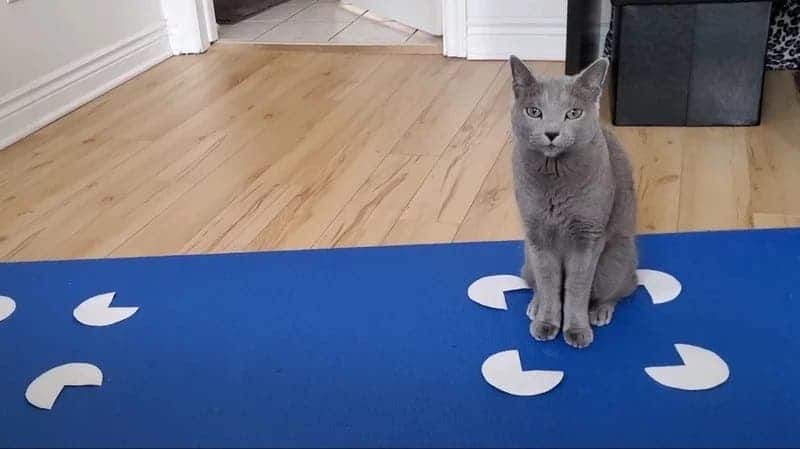With the exception of food and catnip, there’s nothing cats love more than boxes. Big or small, tall or short, cardboard or plastic — they will all do. When a box isn’t around, cats will improvise. They’ll gladly occupy your laundry basket, suitcase, or even the kitchen sink. Scientists are still debating why exactly felines seem to enjoy squeezing inside a box so much, but this behavior seems hardwired.
A new study, based on a citizen science project performed during the COVID lockdown, found that cats will even sit inside an illusionary 2-d box, consisting of the outline of a square on the floor.

Cats are anti-claustrophobic, deriving comfort from being as crammed in as possible. According to a study performed at Utrecht University in the Netherlands, shelter cats that had hiding boxes at their disposal had far less stress hormones in their blood. The researchers concluded that the hiding boxes enabled the felines to cope with the stressful situation of a new shelter environment.
However, even cats accustomed to the environments, such as house cats, will gladly jump at the opportunity of a vacant box. One train of thought among researchers who investigated this feline behavior suggests that cats like to linger in boxes or other small enclosures at home because they feel the safest and most comfortable this way, especially when dozing off. Also, cats may sit in boxes because they are vicious predators at heart and like a good ambush spot or simply because it reminds them of the time they were kittens, crammed in by their littermates.
There’s a great deal of speculation because none of these hypotheses is easily verifiable due to the notoriously fickle nature of cats. Unlike dogs, you can’t train cats to comply with your planned out science experiment. But where there’s a will, there’s a way.
In 2017, Twitter was on fire with posts showing pictures of cats parking themselves in squares of tape marked out on the floor. Inspired by the #CatSquare challenge and lecture she once attended about dogs’ susceptibility to visual illusions, Gabriella Smith, a graduate student at Hunter College (CUNY) in New York City and a researcher at the Alex Foundation, devised an experiment that mixed both ideas.
Specifically, Smith wondered how cats would react to the Kanizsa triangle, an optical illusion in which Pac-Man-like cutout circles are arranged in such a way that they create the appearance of a triangle. In this case, the circles create the appearance of a square.
Smith and colleagues also had to think outside the box when it came to the furry participants. Rather than having felines feel uncomfortable inside a lab setting, the researchers allowed volunteers and their cats to test the illusion in their very own homes.
Each participant was given a booklet instructing them how to print and cut out the paper shapes, and then tape them to the floor into three distinct shapes: a Kanizsa illusion, the outline of a full square, and a control that had the Pac-Man shapes facing outward. The participants had to film their cats whenever they noticed them interacting with the shapes over six days. The humans were asked to wear sunglasses when filming in order to avoid any eye contact signal that may have influenced the cat’s behavior. This was still during the height of the pandemic so the owners spent a lot of time at home with their pets.
About 500 people signed up for this citizen science project but only about 30 completed the study and supplied reliable data. According to the results, cats chose to sit in the Kanizsa square just as much as in the actual outline of a square, and much more frequently than in the non-square outline.
This non-random behavior suggests that it’s the presence of the square-like shapes that prompt the cat to sit rather than the pieces of tape on the floor. Just like the human brain, feline brains are sensitive to contour and boundaries, so they will interpret shapes as something they encounter in the real world.
“To the best of our knowledge, this investigation is the first of its kind in three regards: a citizen science study of cat cognition; a formal examination into cats’ attraction to 2D rather than 3D enclosures; and study into cats’ susceptibility to illusory contours in an ecologically relevant paradigm. This study demonstrates the potential of more ecologically valid study of pet cats, and more broadly provides an interesting new perspective into cat visual perception research,” wrote the researchers.
Previously, researchers showed that dogs are susceptible to optical illusions but research into cat cognition is rather sparse. Thanks to citizen science, research has caught up showing that cats too can be fooled just as easily by their eyes as dogs and silly humans.
The findings appeared in the journal Applied Animal Behaviour Science.






